Movement
Gentle Exercise Unveiled in Water Aerobics

As we gracefully age, our bodies may not be as spry as they once were. But that doesn’t mean we should hang up our exercise shoes just yet. In fact, it’s quite the contrary. Welcome to the world of water aerobics, my friends, a gentle yet effective way to stay fit and fabulous, no matter how many candles are on your birthday cake!
Water aerobics, also known as aquatic fitness, is a low-impact exercise performed in the shallow end of a swimming pool. It’s a wonderful way to keep moving without putting too much strain on our joints, making it perfect for us seniors. But don’t let the term “low-impact” fool you. This exercise can give you a full-body workout, strengthening your muscles, improving your cardiovascular health, and boosting your flexibility.
Now, let’s talk nutrition. As we all know, exercise and nutrition go hand in hand. During our golden years, our bodies need a little extra care and attention. A balanced diet filled with lean proteins, fruits, vegetables, and whole grains can provide the necessary fuel for our water aerobics sessions. And let’s not forget about hydration. Drinking plenty of water before, during, and after our workouts is crucial, especially when we’re splashing around in the pool.
But water aerobics isn’t just about physical wellness. It’s also about mental wellness. The soothing quality of water can help reduce stress and promote a sense of calm. Plus, participating in a group exercise class can provide a sense of community and camaraderie, which is always a mood booster.
Let’s not overlook the fun factor either. Water aerobics is a hoot! It’s like being at a pool party, but with the added benefit of getting fit. You can even incorporate accessories like foam noodles and water weights to add a little extra oomph to your workout.
Now, onto the longevity aspect. Regular exercise, such as water aerobics, can help us age more gracefully. It can reduce the risk of chronic diseases, improve our balance, and even boost our brain health. And when combined with a healthy diet and a positive mindset, it can help us lead a longer, happier life.
Speaking of positivity, let’s talk about the power of a positive mindset. It’s easy to get caught up in the negatives of aging, but let’s flip the script. Each wrinkle is a testament to a life well lived. Each gray hair is a badge of honor. And each water aerobics class is a celebration of our vitality. So let’s embrace our age and celebrate our ability to stay active and healthy.
Lastly, let’s touch on the cooking aspect. After a refreshing water aerobics session, why not whip up a nutritious meal? Cooking can be a therapeutic activity, and it’s a great way to ensure we’re fueling our bodies with wholesome foods. Plus, it’s a chance to get creative in the kitchen. Who says healthy eating has to be boring?
So there you have it, my friends. Water aerobics is a gentle, fun, and effective way to stay fit in our golden years. It’s more than just an exercise. It’s a lifestyle. A lifestyle that promotes physical wellness, mental wellness, positivity, longevity, and a love for healthy cooking. So why not dive in? The water’s just fine!

Movement
Ease Your Lower Back Pain with These Simple Stretches for a More Comfortable You

Lower back pain is a common issue that can disrupt daily life, but incorporating simple stretches into your routine can provide significant relief. Staying active is one of the most effective and affordable ways to alleviate or prevent lower back discomfort. Let’s explore eight easy stretches that target this area, offering a path to comfort and mobility.
Knee-to-Chest Stretch
The knee-to-chest stretch is a gentle way to elongate the lower back muscles. Lie on your back, bring one knee towards your chest, and hold it with both hands. This position helps to relieve tension in the lumbar spine.
Cat-Cow Stretch
The Cat-Cow stretch is a classic yoga pose that promotes flexibility and strength in the spine. Begin on your hands and knees, then alternate between arching your back like a cat and dropping your belly like a cow. This movement encourages better spinal alignment and eases tension.
Child’s Pose
Child’s Pose is a restorative stretch that gently elongates the lower back. Kneel on the floor, sit back on your heels, and stretch your arms forward. This pose provides a calming effect while relieving lower back pressure.
Seated Forward Bend
The Seated Forward Bend targets the hamstrings and lower back. Sit with your legs extended and reach towards your toes. This stretch not only eases tightness in the lower back but also enhances flexibility in the hamstrings and hip flexors.
Piriformis Stretch
The piriformis stretch is beneficial for those experiencing sciatic pain. Lie on your back, cross one leg over the other, and gently pull the uncrossed leg towards your chest. This stretch targets the piriformis muscle, helping to alleviate lower back discomfort.
Hip Flexor Stretch
Tight hip flexors can contribute to lower back pain. To stretch them, kneel on one knee with the other foot in front, creating a 90-degree angle. Lean forward slightly to feel a stretch in the hip flexor of the kneeling leg.
Pelvic Tilt
The pelvic tilt is a subtle movement that strengthens the lower back. Lie on your back with your knees bent and feet flat on the floor. Tighten your abdominal muscles and tilt your pelvis upward, flattening your back against the floor.
Supine Spinal Twist
The Supine Spinal Twist is a relaxing stretch that targets the entire spine. Lie on your back, bring one knee across your body, and let it drop to the side. This twist helps to relieve tension and improve spinal mobility.
These stretches are simple yet effective tools for alleviating lower back pain. Incorporating them into your routine can enhance flexibility, reduce discomfort, and promote overall well-being. Remember, staying active is one of the best ways to maintain a healthy back and prevent future pain.
Let us know what you think, please share your thoughts in the comments below.
Movement
Revamp Your Walk: Boost Health with These 5 Key Steps
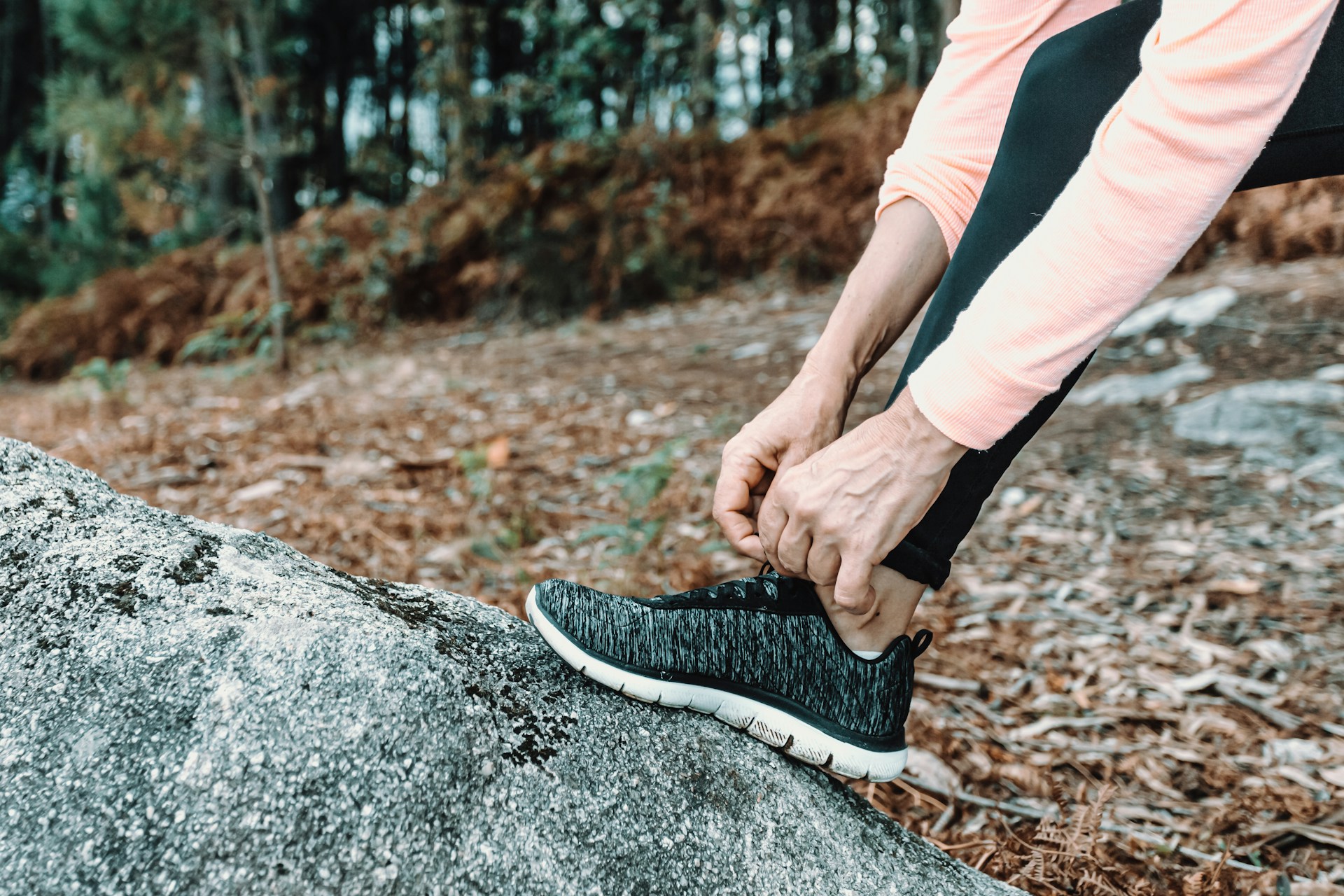
Starting your day with a brisk walk can do wonders for your health and weight loss goals. Walking is not only easy and accessible, but it also has a host of benefits for your cardiovascular system, lung strength, and metabolism. Here are five ways to enhance your daily walk, making it a powerful tool for shedding those extra pounds and improving your overall well-being.
Wear the Right Gear
Before you even step outside, make sure you’re equipped with a good pair of walking shoes. This simple investment can make a world of difference in your comfort and performance.
“All you need is a good pair of walking shoes,” says a seasoned fitness expert. Proper footwear can help prevent injuries and make your walk more enjoyable.
Track Your Heart Rate
Monitoring your heart rate can significantly improve the effectiveness of your walking routine. A heart rate monitor can be a valuable tool in understanding your workout intensity.
“I love the MYZONE because it’s so simple and easy,” the expert comments. By keeping your heart rate within 70-80% of your maximum (calculated as 220 minus your age), you can maximize your aerobic capacity and fat burning.
Start Slow and Build Gradually
It’s crucial to ease into any new exercise program to avoid injury and ensure long-term success. Start by walking short distances and gradually increase both the duration and intensity of your walks over a period of 4-6 weeks.
“The goal is to increase your baseline fitness with maybe 4-6 weeks of building up endurance and distance by slowly adding to these variables and taking baby steps,” advises the expert.
Schedule Walks with Friends
One surefire way to stick to your walking routine is to make it social. Research shows that people are more likely to follow through with exercise when they know someone is counting on them.
“It’s an ‘appointment,’ and someone is counting on you to show up!” says the fitness expert. Scheduling walks with a friend or family member can make your exercise more enjoyable and keep you accountable.
Combine Walking with a Healthy Diet
Exercise alone won’t lead to significant weight loss if it’s not paired with a balanced diet. Pay attention to what you’re eating and drinking each day to ensure you’re burning more calories than you consume.
“The overall goal is burning calories, whether they are from fat or from carbohydrates,” the expert points out. Monitoring your diet can amplify the benefits of your walking routine, helping you achieve and maintain your weight loss goals.
Walking is a fantastic way to boost your health and aid in weight loss. By following these five tips, you can turn your daily walk into a highly effective workout. Remember to be patient with yourself—changes take time, but with consistency, you’ll soon start to see and feel the benefits. So lace up those shoes, grab a friend, and get moving!
Let us know what you think, please share your thoughts in the comments below.
Movement
Unlock Your Best Shape Yet: 13 Expert Tips for Fitness After 50
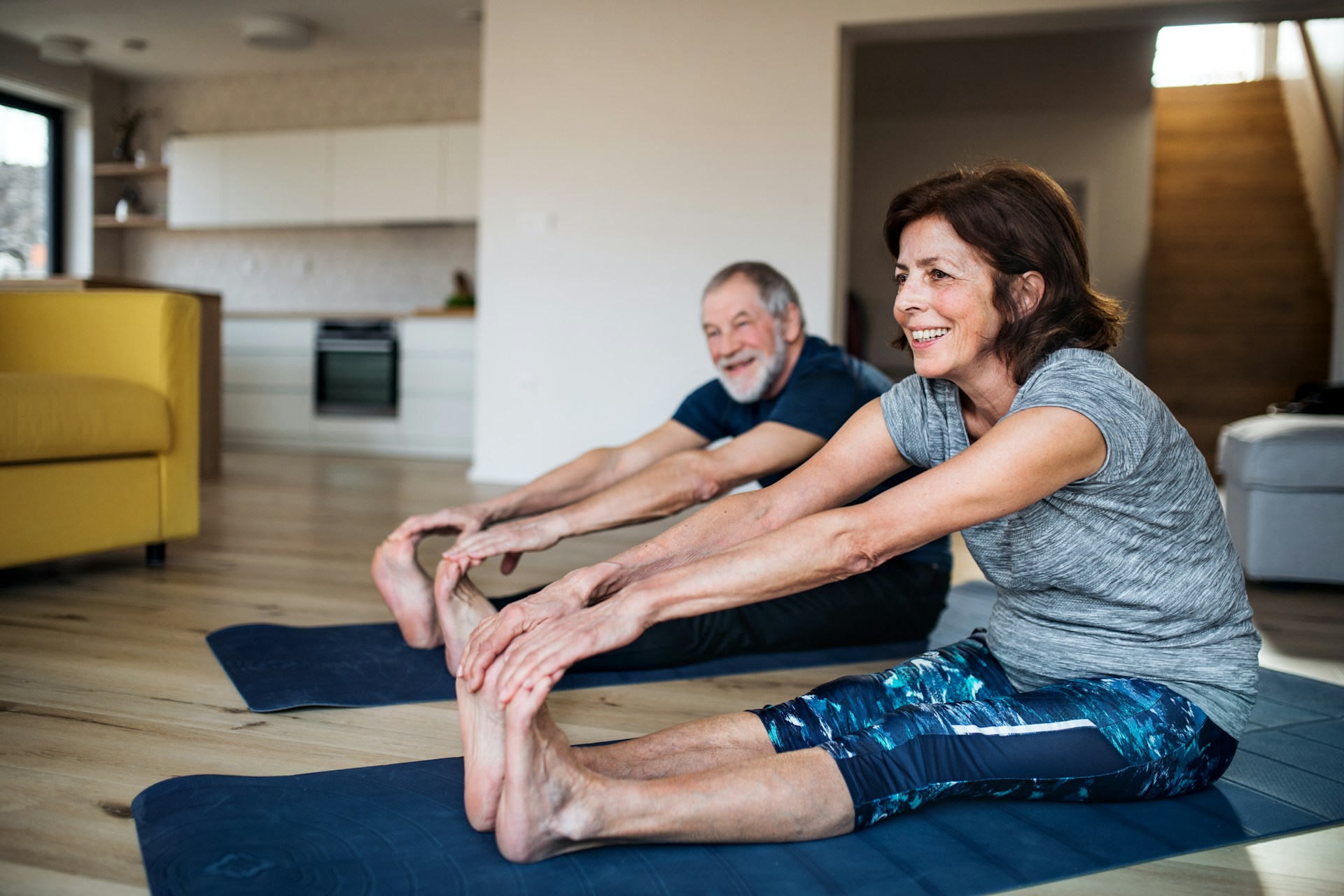
Maintaining your health and fitness after crossing the milestone of 50 requires a balanced approach and an understanding that your body’s needs evolve as you age. This wisdom comes from Garage Gym Reviews’ certified personal trainer, Kate Meier, CPT. She shares 13 insightful tips to keep you fit and active in your golden years and beyond.
Aging brings with it the need to prioritize certain aspects of fitness, such as cardiovascular health, muscle mass preservation, bone density, and improved balance. A regular exercise routine that incorporates strength training, cardio, and exercises to enhance mobility can do wonders. Add to this, a healthy, nutrition-rich diet, and you’ve got the formula to age gracefully while maintaining a fit body.
Kate Meier shares, “As you enter your 50s, the list of factors to consider as you plan your fitness regimen grows. Combining exercise, diet, and lifestyle habits is important if your goal is to get fitter overall. The following tips can help you reach your goals and maintain optimal fitness in your 50s.”
Strength Training
Strength training is a key part of any exercise routine, especially for those over 50. It helps maintain muscle mass and bone density, which are crucial for staving off injuries and staying strong as you age. But, it’s not just about muscle and bones.
“Staying consistent with resistance training is an important part of maintaining your fitness as you age,” states Meier. “Beyond improving muscle mass and bone density, strength training also helps keep your metabolism strong.”
Cardio
Cardiovascular exercise is equally vital. Regular cardio workouts like walking, jogging, cycling, or swimming are essential for heart health. It also supports healthy weight management and overall fitness.
“Cardiovascular exercise is especially important to reduce the risk of a range of age-related conditions, including heart disease,” says Meier.
Balance and mobility
Balance and mobility exercises are another key part of a well-rounded fitness routine. Achieving and maintaining good balance can prevent falls and injuries that can significantly affect one’s quality of life as they age.
“Good balance is a key aspect of healthy aging,” Meier advises. “Incorporate exercises that promote good balance to maintain good balance as you age.”
Movement
In our modern world, where desk jobs and sedentary lifestyles are commonplace, every bit of movement counts. Staying active throughout the day by taking short walks or doing some stretches can negate the detrimental effects of sitting for extended periods.
“Getting workouts in is important, but so is moving throughout your day,” says Meier.
Hydration
Hydration is another crucial factor where health and fitness are concerned. Drinking water and eating foods that hydrate the body facilitate digestion, nutrient absorption, and maintain energy levels. According to Meier, dehydration can lead to fatigue, cramps, and other health issues, derailing your fitness progress.
Sleep
Sleep is an essential aspect of maintaining good health and achieving fitness goals. Adequate sleep can boost mood, cognitive performance, and overall health, while lack of it increases your risk of chronic ailments.
“Getting enough sleep goes a long way in helping you feel good and get the most out of your workouts and day-to-day life,” says Meier.
Diet
Eating a balanced diet rich in essential nutrients can help maintain energy levels, aid recovery from workouts, and combat inflammation.
“Getting all the nutrients your body needs is important to maintaining your health as you age,” explains Meier.
Consistency
The secret weapon for achieving longevity in fitness is consistency.
“In your 50s, staying active is the best way to make sure you maintain the skills, strength, and balance you’ve built over the years,” shares Meier.
Finding joy
Finding joy in your workouts is a simple but often overlooked aspect that can make a significant difference in your motivation and commitment to staying fit.
“If you work out in a way that you love, both physical and mental health stand to benefit,” says Meier.
Workout Partner
Having a workout partner not only makes workouts more fun but also boosts motivation and accountability.
“Finding camaraderie in another fitness enthusiast with similar goals and facing the same challenges you are can work wonders for your fitness routine,” says Meier.
Protein
Your nutritional needs change as you age. Increasing protein intake can support muscle maintenance and repair, helping you stay strong and active.
“Older adults fare better when they eat more protein than younger adults,” Meier explains.
Check-ups
Regular health check-ups are vital to monitor your health and ensure your fitness routine is aligned with your overall wellness.
“Recommended screenings for certain diseases and general wellness measures like blood pressure and cholesterol help determine your risks of a range of age-associated diseases,” says Meier.
Mental Health
Mental health, though not directly related to physical fitness, plays a significant role in overall well-being.
“While your mental health may not directly impact how fit you look on the outside, it’s an overarching piece of the puzzle,” says Meier.
Using these tips, finding a balance between physical activity, good nutrition, regular health check-ups, and taking care of your mental well-being should have you feeling fit, healthy, and thriving well past 50.
Let us know what you think, please share your thoughts in the comments below.
-

 Health6 months ago
Health6 months ago17-Second Neuropathy Solution
-

 Nutrition10 months ago
Nutrition10 months agoThe Aging Secret of Vitamin D Unveiled
-
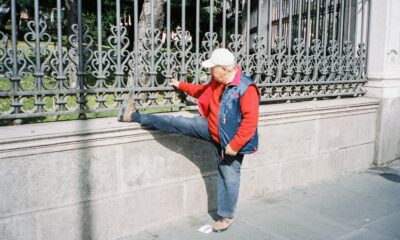
 Health1 year ago
Health1 year agoPreventing Falls and Injuries for Seniors
-

 Health5 months ago
Health5 months agoOncologist Reveals Top 5 Cancer Prevention Tips You Shouldn’t Ignore
-
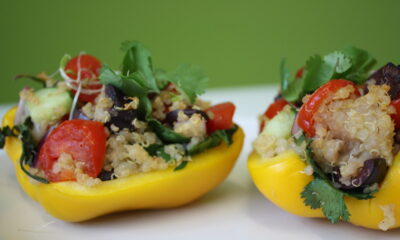
 Nutrition1 year ago
Nutrition1 year ago5 AMAZING Dinner Recipes That Are Also HEALTHY
-
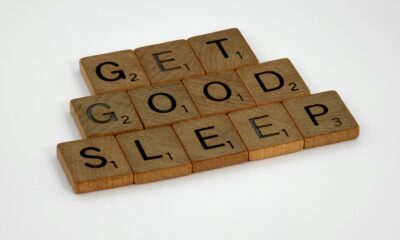
 Lifestyle6 months ago
Lifestyle6 months agoSleep Soundly with These 11 Expert-Approved Bedtime Routines
-
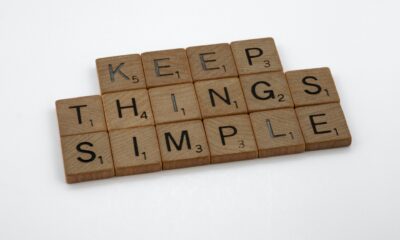
 Health11 months ago
Health11 months agoDownsizing Tips: Simplifying Your Lifestyle
-

 Lifestyle2 months ago
Lifestyle2 months agoMorning Habits That Could Add Years to Your Life